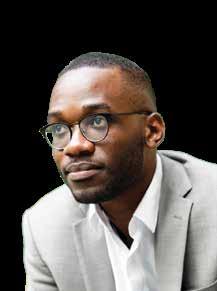
9 minute read
SEPTEMBER 22, 24
Concerts of Thursday, September 22, 2022, 8:00pm Saturday, September 24, 2022, 8:00pm PETER OUNDJIAN, conductor
JOEL THOMPSON, narrator
EMANUEL AX, piano
Thursday’s concert is dedicated to the remarkable musicians and staff of the ASO, and to Music Director Nathalie Stutzmann’s first season, by Bill and Rachel Schultz. JOEL THOMPSON (b. 1988)
To Awaken the Sleeper (2021)
21 MINS
Joel Thompson, narrator WOLFGANG AMADEUS MOZART (1756–1791)
Piano Concerto No. 18 in B-flat Major,
K. 456 (1784) 30 MINS
I. Allegro vivace
II. Andante un poco sostenuto
III. Allegro vivace Emanuel Ax, piano
INTERMISSION
20 MINS
SERGEI RACHMANINOV (1873–1943) Symphonic Dances, Op. 45 (1940) 37 MINS
I. Non allegro
II. Andante con moto (Tempo di valse)
III. Lento assai — Allegro vivace
The use of cameras or recording devices during the concert is strictly prohibited. Please be kind to those around you and silence your mobile phone and other hand-held devices.
by Noel Morris
Program Annotator
To Awaken the Sleeper To Awaken the Sleeper is scored for two flutes (one doubling piccolo), two oboes, two clarinets, bass clarinet, two bassoons, four horns, three trumpets, two trombones, tuba, timpani, percussion, harp and strings.
Joel Thompson, best known for the choral work, Seven Last Words of the Unarmed, is an artist and educator currently serving as composer-in-residence with the Houston Grand Opera (HGO). Committed to creating spaces for healing and community through music, Thompson has collaborated with the New York Philharmonic, Atlanta Symphony Orchestra, Minnesota Orchestra, Tallahassee Symphony Orchestra, Chicago Sinfonietta, Colorado Music Festival, and also serves as composerin-residence at the New Haven Symphony Orchestra. His opera, The Snowy Day, was commissioned and premiered by HGO in December 2021.
Piano Concerto No. 18 in B-flat Major, K. 456 In addition to the solo piano, this concerto is scored for one flute, two oboes, two bassoons, two horns and strings.
With a kick in the pants, the Archbishop of Salzburg severed ties with Wolfgang Mozart in 1781. It was terribly humiliating and very opportune. The young composer desperately needed an excuse to leave home. His father, Leopold, had been a devoted parent and teacher, but was also guilty of serious overreach. As biographer Maynard Solomon wrote, “Without significant exception, Leopold opposed or interfered with all of his son’s love affairs.”
Four years earlier, Leopold had sent young Mozart and his mother on a job-hunting tour of Germany and Paris (Wolfgang’s mother was instructed to keep him away from women). For the first time in his life, the young composer was out from under his father, and quickly fell into a steamy romance with his cousin in Augsburg. The next stop was Mannheim where he fell in love with the soprano Aloysia Weber. He wrote home announcing his intention to remain with Aloysia’s family and pursue a freelance career, which
These are the first ASO performances.
First ASO performances: February 9–11, 1995 Yoel Levi, conductor Radu Lupu, piano
Most recent ASO performances: January 7–10, 2010 Donald Runnicles, conductor Robert Levin, piano
WIKIMEDIA prompted a fierce response from dad: “Off with you to Paris.” In general, the tour of 1777–1779 was a bust. Many of the nobles who had been so taken with the child prodigy Mozart were less interested in the grown-up version. For Leopold Mozart, this was but a setback—he had plans for his genius son. Leopold Mozart was a successful musician serving in the court of the Archbishop of Salzburg. To say he was successful was to say that he had a steady job as a servant at court and had secured a similar job for his son. Because Leopold had produced and managed the careers of two child prodigies (Wolfgang and his sister, Marianne), he’d actually accumulated some wealth, including a nice apartment, a private carriage and servants of his own. Leopold’s greatest ambition was to see young Wolfgang become the ranking musician in one of the higher courts in Europe—and to continue sending money home. In March of 1781, the 25-year-old Wolfgang took a fateful trip to Vienna. As was his habit, he began making his rounds, drumming up projects among the nobles, including an audience with the emperor. But one thing was different about that particular trip: his prince, the Archbishop of Salzburg, was in town. The prince scuttled Mozart’s plans and took pains to remind him of his rank, which was somewhere between cook and valet. A blowup ensued.
Mozart quit his job. Through a series of letters, Leopold scrambled to repair the damage, but young Mozart refused to cooperate. In this instance, Mozart could claim he had defended the family honor. With his next act of defiance, he could not. He took up lodgings in Vienna with the widow Weber and her daughters (formerly of Mannheim). With Mozart’s former love Aloysia Weber now married, he set his sights on her younger sister, Constanze. Without his father’s consent, Wolfgang married her on August 4 in St. Stephen’s Cathedral. Mozart and his bride became “central figures in the Viennese beau monde,” according to biographer Maynard Solomon. “Glittering all-night parties were held in their apartment; they were to be seen at the masked balls
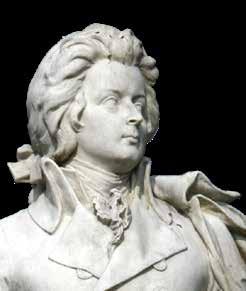
and carnival festivities.” They enjoyed a lavish lifestyle, supported in large part by Mozart’s ability to write and perform piano concertos. Living in Vienna, Mozart was a subject of the Holy Roman Empire, where the Church held enormous influence over daily life. As such, theaters closed during Lent, creating an opportunity for a different form of entertainment. For the Lenten season of 1784, Mozart sold subscriptions and gave more than a dozen public concerts, with the piano concerto serving as the major draw. In September, he made a push to write more concertos for the Lenten season of 1785. Completing the Piano Concerto No. 18 on September 30, 1784, Mozart produced a total of six piano concertos that year. From a letter written by Leopold Mozart, we know that Wolfgang composed and performed one of them for a musician named Maria Theresia von Paradis (a noted singer, pianist and composer who had been blinded at age four). Some scholars believe the Concerto No. 18 was originally written for her to play.
Symphonic Dances, Op. 45 The Symphonic Dances are scored for piccolo, two flutes, two oboes, English horn, two clarinets, bass clarinet, alto saxophone, two bassoons, contrabassoon, four horns, three trumpets, three trombones, tuba, timpani, percussion, harp, piano and strings.
From 1940–1941, Russian composer Sergei Rachmaninov spent two summers in a Long Island hamlet. “Imagine the joy the lucky boaters experienced drifting by at just the right time,” writes the Huntington Historical Society, “while the virtuoso was practicing in his studio near the water.” Such was life for a famous composer in exile. Rachmaninov had come from an aristocratic family whose holdings were squandered by his improvident father. Young Sergei emerged as an important composer and conductor and seemed to be headed for celebrity status, with all its advantages when the Russian Revolution upended his world. Members of the Social Revolutionary Party seized the composer’s country estate; concert life came to a halt. When he received an invitation to perform in Stockholm, Rachmaninov led his family across the Finnish border,
First ASO performance: December 14, 1964 Robert Mann, conductor
Most recent ASO performances: November 29–December 1, 2018 Edward Gardner, conductor
WIKIMEDIA traveling by train and open sledge, and never went back. Moving to the United States in 1918, he embarked upon a piano career (he is counted among the greatest pianists ever) and lived out his life as a celebrated performer. Rachmaninov—the composer—was undervalued. It started early with his First Symphony. So damning were the reviews he quit writing for three years, and the manuscript vanished. Long believed to have been destroyed by the composer, it is today rumored to be in the hands of a private collector. Rachmaninov did recover from the trauma of the First Symphony and wrote a number of compositions, but most were not well received in the West. Regrettably, he wrote only six more works between 1918 and 1943, when he died.
Rachmaninov wrote Symphonic Dances, his last piece, in the summer of 1940 at the seaside estate on Long Island. As was typical of the composer, he embedded its pages with secrets, little cameos that bear some personal significance. In this case, the cameos look back on 50 years of compositions. A number of works make appearances, including a private reference to his long-lost First Symphony (this musical quote was discovered after his death when the original orchestral parts surfaced in Leningrad). The last movement of Symphonic Dances shrieks with the Dies irae (Day of Wrath) from the Roman Catholic/Latin Mass for the dead. A tune he used throughout his career, it is something of a curiosity, given that Rachmaninov was Russian Orthodox. In the Symphonic Dances finale, the Dies irae does battle with a Russian Orthodox theme from the composer’s All-Night Vigil: “Blessed Art Thou, O Lord.” In the autograph manuscript, he wrote the word “Alliluya,” just as Dies irae finally gives way to the Orthodox hymn. At the end of the score, which is now housed at the Library of Congress in Washington, D.C., Rachmaninov wrote: “I thank thee, Lord.”
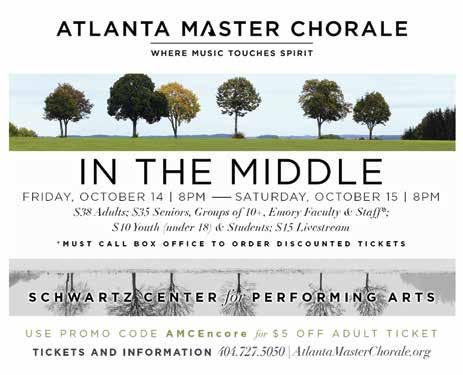

SIAN RICHARDS
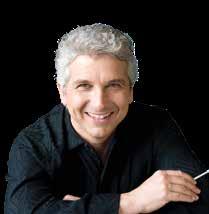
NIGEL PARRY PETER OUNDJIAN, CONDUCTOR
Recognized as a masterful and dynamic presence in the conducting world, Peter Oundjian has developed a multi-faceted portfolio as a conductor, violinist, professor and artistic advisor. He has been celebrated for his musicality, an eye towards collaboration, innovative programming, leadership and training with students and an engaging personality. Strengthening his ties to Colorado, Oundjian is now Principal Conductor of the Colorado Symphony in addition to Music Director of the Colorado Music Festival.
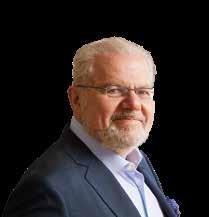
Now carrying the title Conductor Emeritus, Oundjian’s 14-year tenure as Music Director of the Toronto
Symphony served as a major creative force for the city of Toronto and was marked by a reimagining of the TSO’s programming, international stature, audience development, touring and a number of outstanding recordings, garnering a Grammy® nomination in 2018 and a Juno award for Vaughan Williams’ Orchestral Works in 2019. An outstanding violinist, Oundjian spent 14 years as the first violinist for the renowned Tokyo String Quartet before he turned his energy towards conducting. EMANUEL AX, PIANO
Born in modern-day Lvov, Poland, Emanuel Ax moved to Winnipeg, Canada, with his family when he was a young boy. Ax made his New York debut in the Young Concert Artists Series, and in 1974 won the first Arthur Rubinstein International Piano Competition in Tel Aviv. In 1975 he won the Michaels Award of Young Concert Artists, followed four years later by the Avery Fisher Prize. Ax has been a Sony Classical exclusive recording artist since 1987, his most recent being Brahms Trios with
Yo-Yo Ma and Leonidas Kavakos. He has received
Grammy® Awards for the second and third volumes of his cycle of Haydn’s piano sonatas. He has also made a series of Grammy®-winning recordings with cellist Yo-Yo Ma of the Beethoven and Brahms sonatas for cello and piano. Ax is a Fellow of the American Academy of Arts and Sciences and holds honorary Doctor of Music degrees from Skidmore College, New England Conservatory of Music, Yale University and Columbia University.






